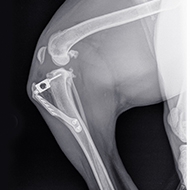Scientists assess the humaneness of drugs
The welfare standards of millions of fish used for scientific research could be improved thanks to a new study, which examined the levels of stress caused by different anaesthetics.
Carrying out the research, scientists from the University of Bristol's School of Veterinary Sciences and AstraZeneca Brixham Environmental Laboratory investigated whether the right drugs are currently being used.
Fish are used by scientists all over the world to study the developmental origins of health and disease. As zebrafish embryos are transparent and develop outside of the body, they allow simple study of the developing embryo, and are therefore the most commonly used laboratory fish.
The research team aimed to find out if the level of stress caused by anaesthetics was inhumane by studying the swimming behaviour of fish.
The effects of nine of the most commonly used drugs were evaluated using video tracking software to measure the swimming behaviour of mixed-sex adult zebrafish.
When each anaesthetic was used at 50 per cent of its standard recommended dose, compared to clean water in a flow-through chematoxic choice chamber, the research team found that several of the drugs caused swimming behaviour associated with dislike.
Two of these anaesthetics were the among the most commonly recommended and widely used for fish - MS222 (ethyl 3-aminobenzoate methanesulphate) and benzocaine.
Researchers found that two of the agents, etomidate and 2,2,2 tribromoethanol, did not induce adverse behavioural responses. In fact, the team says that etomidate appeared to be the best suited for future, humane use.
While there have been advancements in general veterinary anaesthetics used for mammals, scientists say fish have fallen behind in this research. It is hoped that this work will help to address the balance.
Dr Jo Murrell, senior lecturer at the university, said: "With tens of millions of fish used in science around the world, it is very important that the anaesthetics used to do this are the most humane available and do not themselves cause a stress response."






 Birmingham Dogs Home has issued an urgent winter appeal as it faces more challenges over the Christmas period.
Birmingham Dogs Home has issued an urgent winter appeal as it faces more challenges over the Christmas period.
